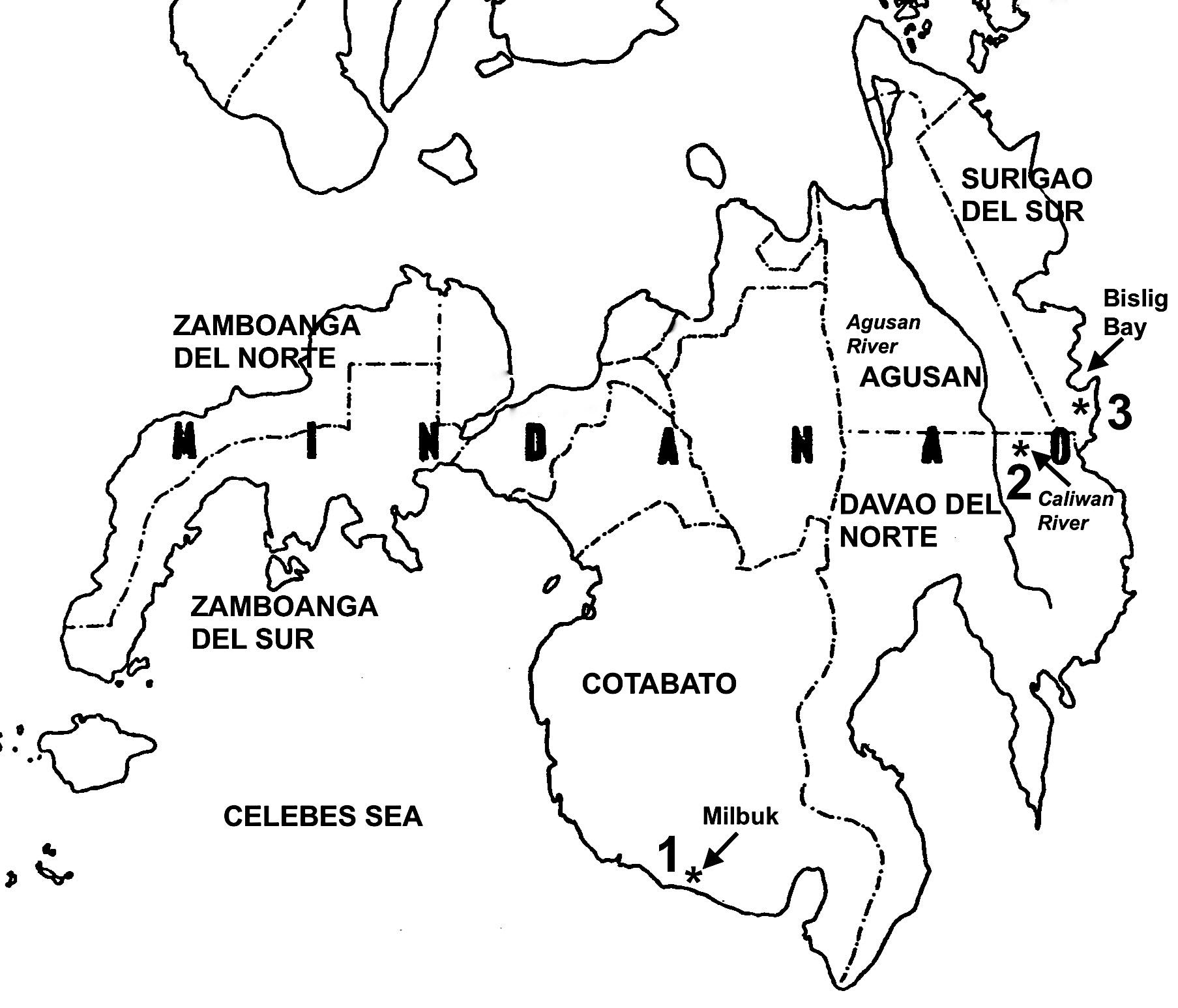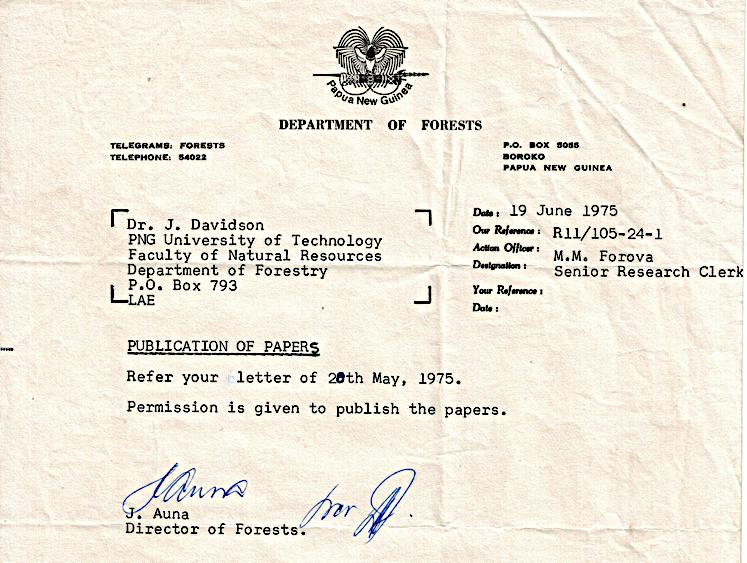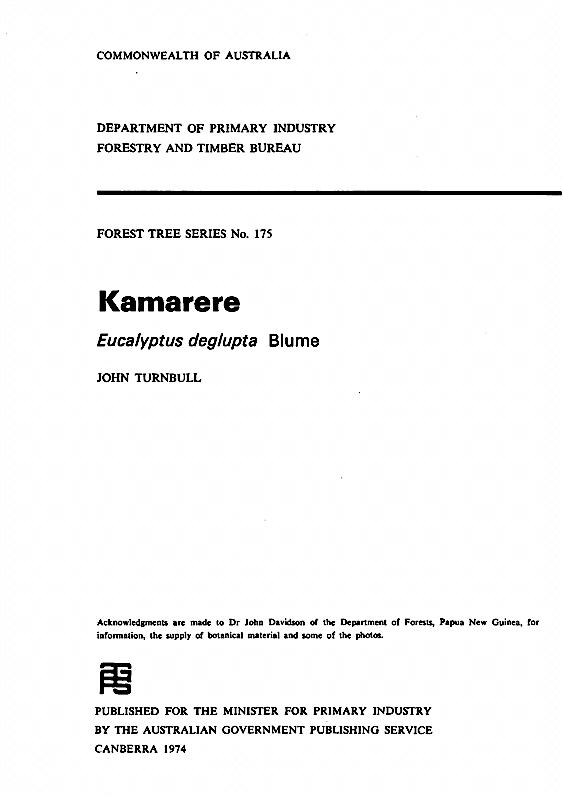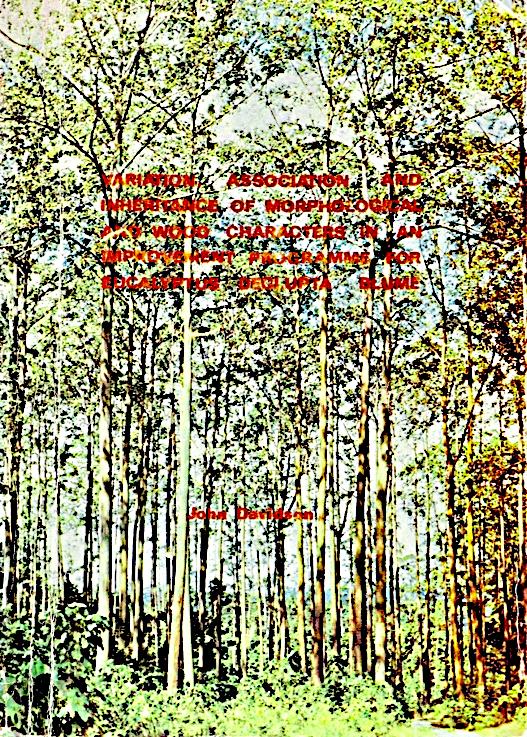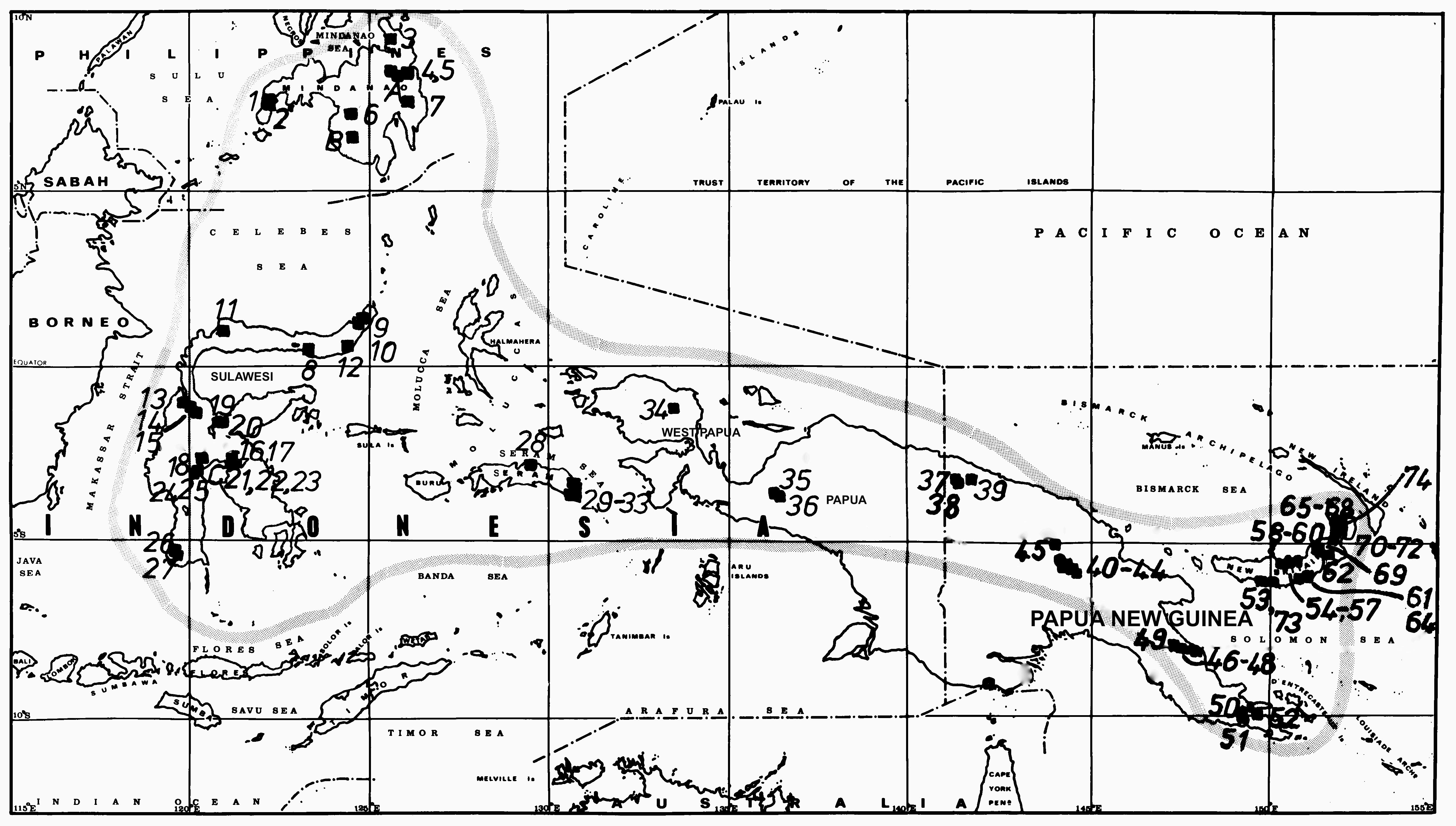
4 minute read
Practical implications of bole shape
from PNGAF MAG ISSUE # 9 B-5B4D3 Dr John Davidson Accompaniment "RAINBOW EUCALYPT MAN" Part 6 of 8 parts
by rbmccarthy
Practical implications of bole shape
The form factor for E. deglupta was found to vary from about 0.7 x 10
Advertisement
-5 units for age/size effects, through
0.4 x 10
-5 units for provenance effects, to only 0.2 x 10
-5
units for site and stocking rate effects. What this magnitude of variation in form factor means can be determined by looking at one of the graphs and the table below.
INCREASE IN VOLUME (M3) PER TREE FOR TREES OF VARIOUS SIZE CLASSES FOR EACH 0.1X10-5 UNIT INCREASE IN FORM FACTOR Height Classes (m) Diameter Classes (cm) 5 10 15 20 25 30 35
5 0.001 0.005 0.011 0.020 0.031 0.045 0.061 10 25 0.002 0.010 0.022 0.040 0.062 0.090 0.122 0.005 0.025 0.055 0.100 0.155 0.225 0.305
50 0.010 0.050 0.110 0.200 0.310 0.450 0.610
For trees having an average diameter at breast height of 30 cm and an average height of 50 m, the total volume varies linearly, increasing at an average rate of 0.45 cu m for each 0.1 x 10
-5 unit increase in
form factor. A form factor of 3.0 x 10
-5
represents about 40 percent of the true cylindrical volume (based on sectional area at breast height and total tree height) occupied by the tree bole, while a form factor of 4.0 x 10
-5 represents about 50 percent. This means each 0.1 x 10
-5
unit change in form factor represents about 1 percent of the volume of a cylinder of the dimensions equivalent to sectional area at breast height and total height in trees of E. deglupta.
If this reasoning was extended to estimation of volume across various size classes, considerable variation in estimation of volume per tree would occur, especially in the larger size classes (see graphs below). Further, when volume per hectare is estimated from the number of trees present per unit area, the variation is greatly magnified, especially at high stocking rates.
Effective plantation management requires a reliable volume table as a base from which yield and economic criteria can be derived. A volume table is only reliable if it is fit for the purpose for which the particular stand being investigated. The results of these studies indicated that a single volume table might not meet the requirements of all the silvicultural and management situations in which E. deglupta would be grown in PNG.
The variation in tree shape among provenances takes on less significance when it is realized that only one or two of the best provenances would be grown on a large scale. The better provenances have form factors in the narrow range 3.7 – 3.8 x 10
-5
. However, when volumes of trees within provenance tests say more than five years old are required, a separate volume table for each provenance would need to be derived and used.
Only a single average initial spacing would likely be used in plantation establishment for a planned particular end use such as for short rotation pulpwood. This would circumvent the differences in shape found among trees of grown from different initial spacing/stocking rates and only one volume table would suffice. Nevertheless, for accurate determination of volume production in spacing research trials individual tables would need to be derived for each spacing/stocking.
It is also expected E. deglupta would be planted always on sites suitable for a good growth rate, i.e., site qualities 1-3. The form factor does not vary much over that range of site quality. For fertilizer trials it would be necessary to consider separate volume tables for each treatment, since the trees are likely to be of a different shape in each treatment depending on their growth rate response.
In conclusion it was stressed again that volume tables for E. deglupta must not be haphazardly constructed and indiscriminately used. Because the shape of trees was found to vary with genetic (provenance), environmental (site quality, silvicultural and management practices) and developmental (age and size) effects, each situation has to be considered carefully before a particular volume table is applied.
It is interesting that for, E. deglupta, Lane Poole in 1925 estimated a form factor or taper of 0.5
18, and
Heather in 1955 a form factor of 0.419
for the merchantable bole of large trees of E. deglupta based on limited data. In Indonesia a form factor of 0.56 is often applied in the absence of any precise information on stand composition.
18 Page 55 In Lane-Poole C E 1925 Forest Resources of the Territories of Papua and New Guinea. Government Printer, Melbourne. 209 pp. 19 Page 277 In Heather W A 1955 The Kamarere Forests of New Britain. The Empire Forestry Review, 34:255-278.




